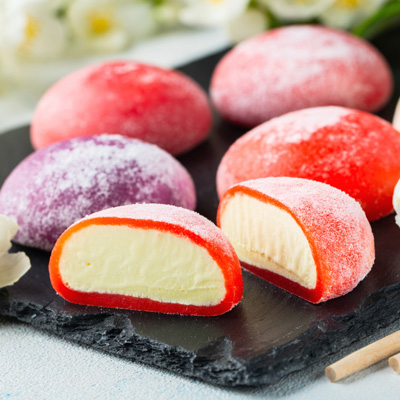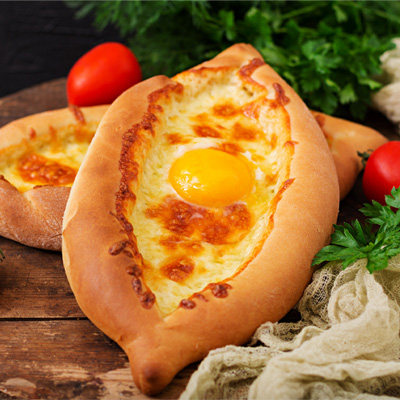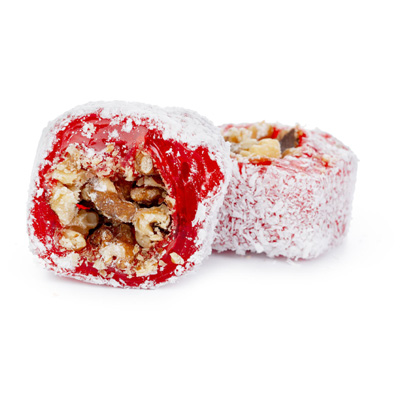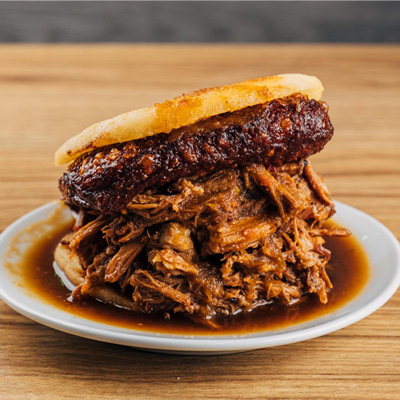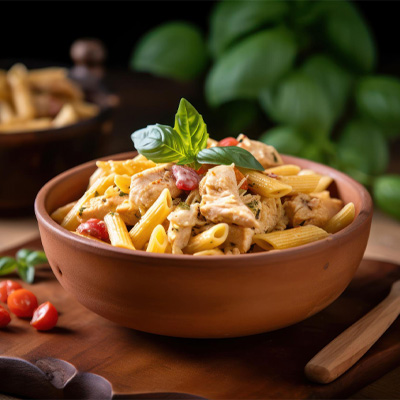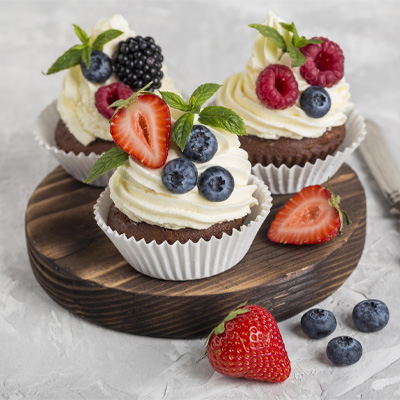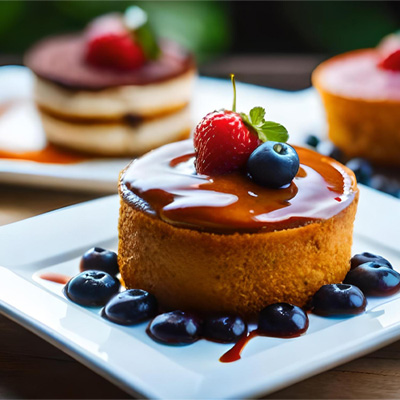Embark on a culinary journey to discover the allure of Mekica, a pastry deeply rooted in Eastern European heritage. This delectable treat, enjoyed for generations, combines simplicity with indulgence, making it a favorite among food enthusiasts. Join us as we unravel the layers of Mekica's history, preparation techniques, and the cultural significance that elevates it to more than just a pastry.
Nutrition Facts
- Kcal
220 - Fat
6 g - Choles
45 mg - Sodium
240 mg - Carbs
35 g - Fiber
1 g - Sugar
5 g - Protein
5 g
Note: The nutrition facts are approximate values and may vary based on the specific ingredients used and any additional toppings or syrups added.
Ingredients
- 2 cups all-purpose flour
- 1 tablespoon sugar
- 1/2 teaspoon salt
- 1 packet (2 1/4 teaspoons) active dry yeast
- 3/4 cup warm milk
- 1 large egg
- 2 tablespoons unsalted butter, melted
- Oil, for frying
- Powdered sugar, for dusting
Directions
- Activate Yeast: In a small bowl, combine the warm milk and sugar. Sprinkle the active dry yeast over the mixture and let it sit for 5-10 minutes, or until it becomes frothy.
- Prepare Dough: In a large mixing bowl, combine the flour and salt. Make a well in the center and add the activated yeast mixture, beaten egg, and melted butter. Mix until the dough comes together.
- Knead Dough: Transfer the dough to a floured surface and knead for 5-7 minutes, or until it becomes smooth and elastic.
- First Rise: Place the dough in a greased bowl, cover it with a damp cloth, and let it rise in a warm place for 1-1.5 hours, or until it doubles in size.
- Shape Mekica: After the dough has risen, punch it down and divide it into small balls (about the size of a golf ball). Flatten each ball into a disk, about 1/4 inch thick.
- Second Rise: Place the shaped mekica on a floured surface, cover them with a cloth, and let them rise for another 15-20 minutes.
- Fry Mekica: Heat oil in a deep frying pan over medium heat. Fry the mekica in batches until they puff up and turn golden brown, about 2-3 minutes per side. Drain on paper towels.
- Serve: Dust the fried mekica with powdered sugar while they are still warm. Serve immediately.
The Origins of Mekica
A Taste of Tradition
Mekica, originating from Slovakia and popular across Eastern Europe, is a deep-fried pastry known for its soft, pillowy texture and sweet aroma. Its history traces back to rural kitchens, where families would gather to create these mouthwatering delights during special occasions and festive seasons.
Symbolism and Celebration
In Eastern European cultures, Mekica is often associated with celebrations and togetherness. Whether served during weddings, holidays, or community gatherings, Mekica symbolizes warmth, unity, and the joy of sharing moments with loved ones.
Ingredients: The Heart of Mekica
Flour and Yeast: The Foundation
The primary ingredients of Mekica include flour and yeast, which form the dough's base. The careful balance of these elements creates the pastry's characteristic softness, providing the perfect canvas for various fillings and toppings.
Fillings and Toppings: Endless Variations
While traditional Mekica is dusted with powdered sugar, modern interpretations have led to a myriad of fillings and toppings. From sweet fillings like jam, chocolate, or honey to savory options like cheese or ham, the versatility of Mekica allows for endless creative combinations.
The Art of Making Mekica
Preparing the Dough
Mekica dough is a blend of flour, yeast, warm milk, sugar, and a pinch of salt. The dough is kneaded to perfection, creating a smooth, elastic texture. After allowing it to rise, the dough is divided into portions, ready to be shaped into discs before frying.
Frying to Golden Perfection
The key to achieving the ideal Mekica lies in the frying process. Each pastry is gently immersed in hot oil, where it puffs up beautifully, creating a golden, crispy exterior while retaining its softness inside. The result is a heavenly contrast of textures that delights the senses.
Variations of Mekica
Classic Sweet Mekica
The classic sweet Mekica is generously dusted with powdered sugar, highlighting its simple yet exquisite flavors. It's a nostalgic treat reminiscent of childhood, evoking warm memories of family gatherings and festive occasions.
Savory Stuffed Mekica
For those with a savory palate, stuffed Mekica filled with cheese, ham, or even spiced potatoes offer a delightful culinary experience. The combination of savory fillings with the pastry's airy texture creates a harmonious blend of flavors.
FAQs
Can I Freeze Mekica?
Yes, you can freeze Mekica for later enjoyment. Ensure they are completely cooled, then store them in an airtight container or freezer bag. To reheat, simply thaw at room temperature and warm in the oven for a few minutes.
Is Mekica Vegan-Friendly?
While traditional Mekica recipes include dairy ingredients, vegan alternatives can be used to create a plant-based version. Plant-based milk and vegan fillings provide a cruelty-free option for those following a vegan lifestyle.
Can Mekica Be Served as a Dessert?
Absolutely! Sweet Mekica, especially those filled with jams or chocolates, make for a delightful dessert. They can be served alongside ice cream or fruit compote for an indulgent treat.
Is Mekica Difficult to Make at Home?
Mekica is relatively simple to prepare at home, requiring basic ingredients and techniques. With a little patience and practice, home cooks can master the art of creating these delectable pastries and enjoy the authentic taste of Eastern European cuisine.
What's the Best Way to Store Leftover Mekica?
To preserve their freshness, store leftover Mekica in an airtight container at room temperature. Avoid refrigeration, as it can affect their texture. Enjoy within a day or two for the best taste and quality.
Can Mekica Be Enjoyed All Year Round?
Yes, Mekica can be savored throughout the year. Whether served warm during winter months or enjoyed as a delightful picnic snack in the summer, its timeless appeal makes it a favorite for every season.
Conclusion
As we conclude our exploration of Mekica, we invite you to embark on a culinary adventure and experience the charm of this beloved Eastern European pastry. Whether you prefer the classic sweetness or the savory indulgence of stuffed varieties, Mekica promises a journey of flavors and traditions. Create cherished moments with your loved ones as you savor the warmth, softness, and deliciousness of Mekica. May every bite remind you of the rich heritage and culinary artistry that this pastry embodies. Na zdravie! (To your health!)



